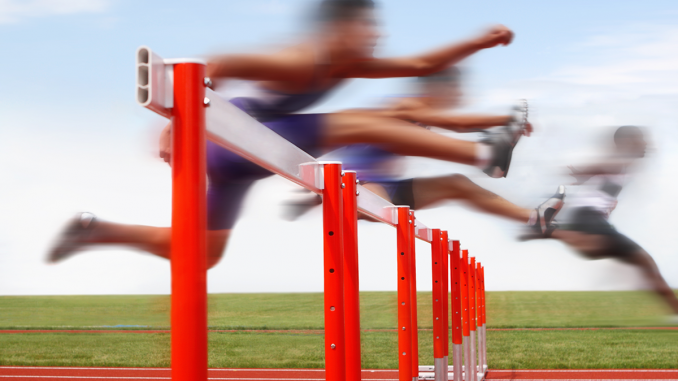
[ad_1]
Athletes can always partake of their “inner cannabis,” as the endocannabinoids have been called.1 That’s the basis of the runner’s high. But when it comes to herb, weed, or extracts from the cannabis plant, Olympians and participants in hundreds of other sports organizations around the world still have to be careful. In September, the World Anti-Doping Agency (WADA) ruled that THC will remain banned during competition and at levels in urine that are indicative of frequent use outside competition.
Meanwhile, an article in the September issue of Internal Medicine Journal2 concludes that THC does not enhance aerobic performance and strength; if anything, it impairs it. There’s also ample evidence, of course, that THC and other plant cannabinoids relieve pain and inflammation, promote neurogenesis, support sleep, stimulate appetite, and reduce stress – all of which make cannabis and its products seem tailor-made for sports recovery.
But frequent post-exercise use of THC-rich cannabis could still trigger a failure at testing time and lead to a suspension of at least a month, even if the athlete can definitively establish that the THC use occurred out of competition and was not intended to improve sport performance (which, again, appears unlikely to begin with). So what’s a high-level athlete to do?
Anti-THC Stigma
In response to requests from “a small number of stakeholders” that it reconsider THC’s non grata status, WADA launched a formal review last year. But at a recent meeting in Sydney, Australia, the agency’s 14-member Executive Committee, composed of athletes and other representatives of sport from around the world, decided that THC would stay on its List of Prohibited Substances and Methods for the foreseeable future.
To be included on the Prohibited list, a substance must meet at least two of the following criteria: 1) It has the potential to enhance sport performance; 2) It represents a health risk to the athlete; and 3) It violates the spirit of sport.
In a statement announcing the decision, WADA noted that its Ethics Expert Advisory Group “continues to consider cannabis use, at this time, to be against the spirit of sport across a range of areas” – an unscientific assertion3 that certainly smacks of stigma.
As for the other two criteria, it doesn’t say. But a 2011 paper in the journal Sports Medicine4 suggests the agency considers cannabis to be potentially dangerous “because of increased risk taking, slower reaction times, and poor executive function or decision making.” This would seem to directly contradict the notion that THC confers an unfair advantage, but there’s no indication yet that the agency accepts the latest science concluding that THC isn’t performance-enhancing.

Loopholes, Limits, and Traps
Fortunately for athletes still hoping to harness the therapeutic benefits of cannabis without fear of punishment, there are options. First and foremost, CBD itself is allowed. In 2019 WADA exempted the non-intoxicating, anti-inflammatory, and pain-relieving5 cannabinoid compound from its blanket ban on pot and synthetic cannabinoids. But CBD on its own is not as effective at easing aches and pains as when paired with THC, a finding supported by a recently published analysis of 18 randomized, placebo-controlled trials.6
Thus it’s noteworthy that the THC metabolite THC–COOH is technically also allowed in urine samples at levels below 150 ng/mL, a threshold intended to serve as a proxy for either acute intoxication or chronic use. In a 2007 study, non-users who smoked a single low-potency joint (3.5% THC) surpassed 150 ng/mL in urine for a few hours,7 suggesting that in naive and infrequent users, WADA’s limit may indeed be a reasonable indicator of current intoxication.
But among regular users, the approach could produce false positives. Cannabinoids, and especially THC–COOH, get sequestered into fat deposits in our bodies, which are then slowly released into the bloodstream. As a result, it’s conceivable that a frequent cannabis user could still test above 150 ng/mL a couple days after last use, despite being subjectively “sober.”8
Cannabis and Sport
The bottom line for elite athletes remains a bit blurry. The benefits of both THC and CBD for reducing inflammation, treating pain, relieving stress, supporting sleep, stimulating appetite, and even recovering from traumatic brain injury,9 make cannabis an attractive remedy and prophylactic – and an increasingly popular one where it’s permitted (if not fully legal), including in the United States’ National Football League and the National Basketball Association.
Athletes run the risk of a failed urine test if cannabis use is too frequent or doesn’t stop soon enough before testing.
But for athletes in WADA-aligned sports organizations around the world, cannabis use off the field could still derail a career, just like it did for Sha’Carri Richardson, the track star banned from US Olympic competition because she tested positive for weed. Most problematically, athletes run the risk of a failed test if use is too frequent or does not stop soon enough before testing – factors that have nothing to do with impairment or performance during competition. Yet these uncertainties could be enough to prevent many participants in these organizations from incorporating THC into their recovery regime.
Despite its recent ruling, a future change of heart is not out of the question, WADA Director General Olivier Niggli said in a statement: “[The agency] plans to continue research in this area in relation with THC’s potential performance enhancing effects, its impact on the health of athletes, and also in relation to perceptions of cannabis from athletes, experts, and others around the world.”
Nate Seltenrich, an independent science journalist based in the San Francisco Bay Area, covers a wide range of subjects including environmental health, neuroscience, and pharmacology. Copyright, Project CBD. May not be reprinted without permission.
Footnotes
[ad_2]
Source link

Soyez le premier à commenter